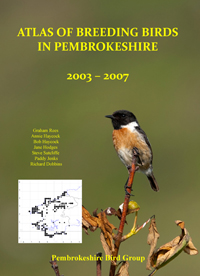Passage migrant. Not recorded in January and March
Lockley et al. (1949) knew of only four birds having been recorded in Pembrokeshire, having cast doubt on Mathew's (1894) statement that it "is by far the commonest of the family upon our coasts and a few are to be seen every autumn".
One or two have been recorded in ten of the years between 1950 and 1979. Regular seawatching at Strumble Head has since given us a new perspective on their occurrences. Table 12 shows that Mathew was indeed correct, a few are seen every autumn, between 4 August and 30 November. On some days late in the period, such as 22 November 1985 when 22 passed, and 17 October 1991 when 97 were seen followed by 130 next day, they can also be the commonest of the skuas to occur.
Observations at the Smalls revealed that one or two passed on ten days in the autumn of 1982, on seven days in 1983 and four in 1984. The only other autumn occurences away from Strumble Head during the 1980s were of a single bird off Skokholm on 16 October 1987 and a total of 10 between 10 August and 22 September 1989.
In combination these records suggest that the path of Pomarine Skuas flying out of the Irish Sea is blocked by the north coast of Pembrokeshire, and they follow this until they can head out to sea again when clear of the Bishops, a few individuals thereafter wandering inshore.
Single Pomarine Skuas have been noted in most recent springs, between 8 April and 6 June, when they have not been confined to the north coast. A flock of five passed Skokholm on 27 May 1991.
Singles were noted at Strumble Head on 8 December 1985 and at the Smalls on 28 February 1983.
Donovan J.W. & Rees G.H (1994), Birds of Pembrokeshire
 Monday, December 19, 2011 at 9:48AM
Monday, December 19, 2011 at 9:48AM  1994 BoP in
1994 BoP in  Iceland Gull
Iceland Gull 
